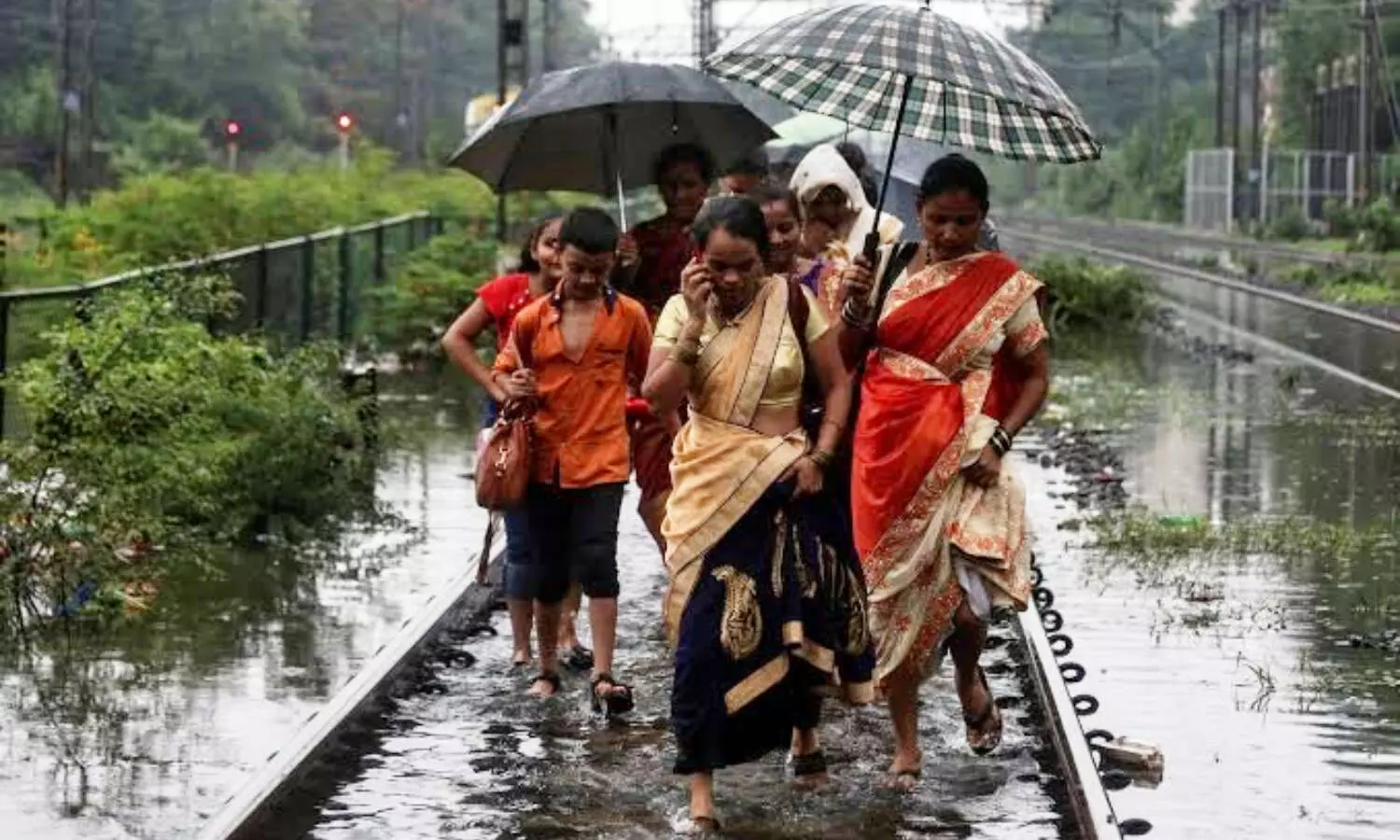Power of rains: How monsoon drives India’s growth in agriculture and economy
Why monsoon is critical for India’s economy and how it’s controlled by global climate forces
By Anoushka Caroline Williams
Hyderabad: The Indian monsoon, particularly the southwest monsoon, remains the most critical climate event of the year, delivering nearly 75 per cent of the country’s annual rainfall.
While 55 per cent of India’s net sown area is under irrigation, the remaining agricultural land relies heavily on timely and sufficient monsoon rains. This annual weather cycle not only sustains crops but also replenishes reservoirs, powers hydropower projects and supports ecosystems.
Improvements in weather forecasting
According to the India Meteorological Department (IMD), monsoon forecasting accuracy has improved sharply over the last four years. From 2021 to 2024, the IMD achieved 100 per cent accuracy in its all-India southwest monsoon rainfall predictions.
How global and local forces shape the monsoon
India’s monsoon system is influenced by a mix of global and regional factors.
One of the most critical is the Inter-Tropical Convergence Zone (ITCZ), a low-pressure belt near the equator where trade winds converge. During summer, the ITCZ moves northward towards the Indian subcontinent, pulling moist winds from the oceans and creating ideal conditions for rainfall. This monsoon trough often reaches the Gangetic plains by July, helping establish widespread rain patterns.
“The ITCZ acts like a seasonal switch,” explained meteorologist S Sridhar, speaking to NewsMeter. “Its northward movement heralds the arrival of the southwest monsoon, while its retreat triggers the northeast monsoon in October.”
Other climate phenomena, such as El Niño and La Niña, also play significant roles.
El Niño, marked by warming of Pacific Ocean waters, often weakens the Indian monsoon, delaying its onset and reducing rainfall. In contrast, La Niña conditions, which cool the Pacific, generally lead to stronger monsoons and more widespread rainfall.
Since 1950, India has experienced 16 El Niño years, of which seven were linked to below-normal rainfall. La Niña years, on the other hand, have often brought above-normal rains but have also increased flood risks.
Uneven rainfall across regions
India receives an average of 125 cm of rainfall annually, but this figure masks major regional differences.
The Western Ghats and Northeast India receive some of the heaviest rainfall, often exceeding 400 cm a year, due to orographic lifting, where moist winds are forced to rise along mountain slopes, cooling and condensing into rain.
Meanwhile, regions such as western Rajasthan, Gujarat, parts of Punjab and Haryana, and the rain-shadow areas of the Deccan plateau receive less than 60 cm annually. High-altitude regions like Ladakh also receive very little precipitation, owing to their cold desert climate.
This spatial disparity has significant consequences for agriculture, water management and infrastructure planning.
Monsoon’s role in the economy and daily life
The southwest monsoon continues to underpin India’s agricultural economy.
Around 64 per cent of the Indian population depends on farming, much of which is rain-fed. A good monsoon boosts crop yields, strengthens GDP and increases rural consumption. Conversely, delayed or deficient rains can cause droughts, crop failures and rural distress.
Rainfall patterns also shape what Indians eat, how they dress and the design of homes in different parts of the country. Even winter rainfall, driven by western disturbances, plays a key role in rabi crop production in north India.
Mission Mausam: A step towards weather-readiness
In September 2024, the Government of India approved Mission Mausam, a new Central scheme aimed at enhancing weather preparedness and climate resilience. The initiative seeks to modernise weather monitoring systems, improve forecasting accuracy, and strengthen early warning frameworks for extreme weather events.
The mission is divided into nine specialised verticals, including OBSERVE_All (for data collection), DEVELOP (for advanced modelling), and IMPACT (for translating science into community alerts). Artificial Intelligence and Machine Learning will also be employed to refine forecasts and decision-making systems.
The mission builds on earlier initiatives like the ACROSS programme under PRITHVI and is structured in two phases: 2024–2026 and 2026–2031.
Preparedness amid climate uncertainty
As climate change accelerates, India’s monsoon faces increasing pressure.
More frequent extreme rainfall events, shifting seasonal patterns and rising temperatures pose risks to agriculture, water security, and public health. While technology has improved forecasting, the unpredictability of the monsoon continues to be a challenge.
India’s response lies in combining traditional knowledge with cutting-edge science, improving rural infrastructure, expanding irrigation networks and strengthening institutional coordination.
Understanding the monsoon is not just about science; it’s about recognising its role in shaping the lives and futures of millions. As India moves forward, being climate-smart will be key to sustainable development.